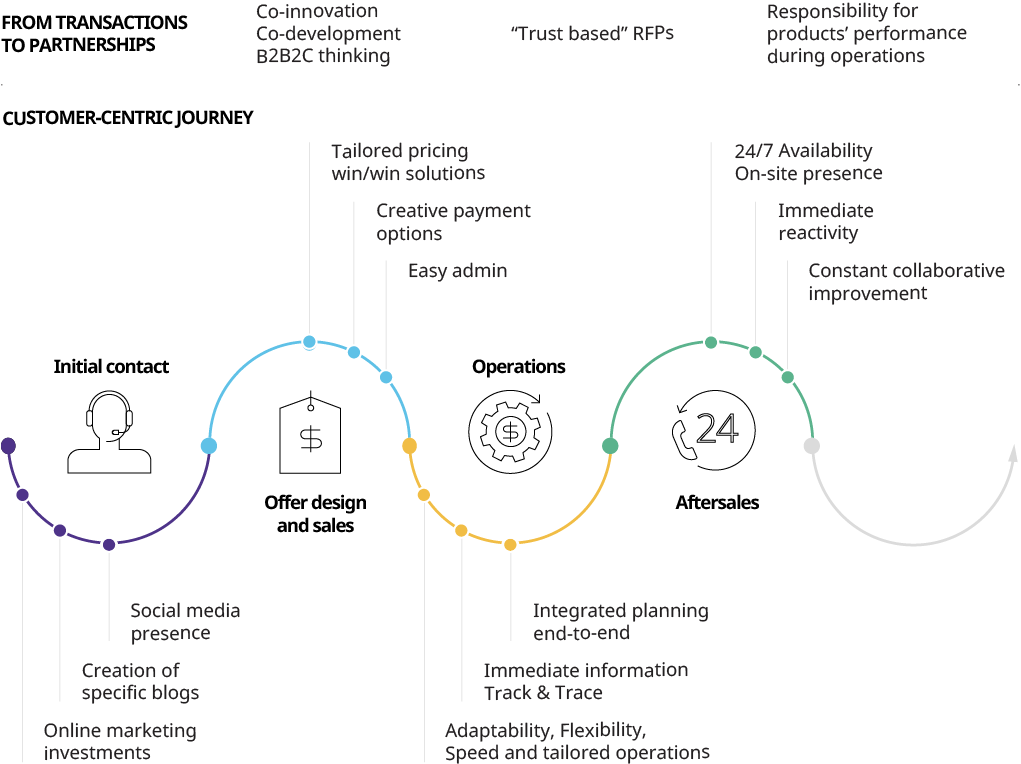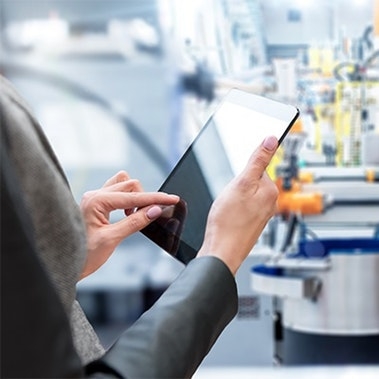But the carryover of the consumerization experience is only one part of the story. The other change is the one B2B is undergoing in a fundamental yet complementary way: from transaction-based relationships, to partnerships. B2B is no longer simply about doing a “one-time” sale; instead, it is about building trust in the long run. This is increasingly becoming the case with the arrival of the Internet of Things (IoT), where the connection between suppliers and clients can only be strengthened and cemented. Strong market trends are reshaping the B2B environment, and companies need to adapt rapidly if they are to thrive.
“Customer Centricity" is reshaping B2B
Exhibit 1: B2B client relationship drivers

Source: Oliver Wyman analysis
From “Transactions” To “Partnerships”
Pushing the expected evolution one step further, it appears that B2B clients are more and more looking for long-term “partnerships,” rather than “one-shot transactions”.
B2B is increasingly about co-innovation and co-development: together shaping the product best adapted to the client’s needs. This evolution is triggering win-win adaptations that reduce costs as well as lead-times while supporting growth. Going one step further, B2B clients increasingly expect suppliers to take into account the expectations of the final customer in a new B2B2C mode of thinking — hence standing ready to fine-tune the components of their offer. In terms of co-innovation and co-development, a leading apparel manufacturer teamed up with his machinery and chemicals suppliers, triggering optimizations that benifited the suppliers as well as the final client. Another more broad example is the Hydrogen Council, a global initiative that promotes collaboration between stakeholders in creating innovative sustainable energy solutions.
Second, the request for proposal (RFP) process will continue to evolve from “price triggered” to “trust-based.” New features such as transparency, tailored interactions, or preparatory investments will become increasingly key, demonstrating the will of a supplier to build something strong and sustainable. While the aspect of price will of course remain crucial, new differentiators will weigh more heavily in the balance. Take the example of a forklift producer that adopted a winning partnering posture during a large-scale RFP, offering innovative, tailored transparency on features, services, and prices combined with high-level adaptability and counsel. In this win-win deal, the supplier won a much larger and more sustainable market than it initially expected, even if it had to concede a slight decrease on its margin.
Finally, suppliers will be asked to take greater responsibility for their products’ performance during operations and have to put themselves into the shoes of their clients even after delivery and installation. This evolving trend is driven both by a new client mindset that is seeking “real understanding” of their needs and by Internet of Things technologies that trigger greater performance transparency and new maintenance models.
While it is true that customers have more possibilities and initiative to switch suppliers based on opportunities, the emerging partnership model would seem to be a means of stabilizing relationships and countering the volatility trend.
Customer relationship of the future
In rapidly changing markets that offer a wide range of affordable new technologies, the key to B2B supplier success lies in shifting from price to service and partnership. Of course, the price must be in line with the market, but more importantly, the supplier must be able to offer B2C-like information, tranparency, speed, reliability, adaptability, and availability — while simultaneously investing in a long-term partnership. Of course, B2B companies will need to adapt: Sales and marketing will need to work together more than ever leaving behind the former silo mindset, while operations will need to gear up so as to handle the rapidly increasing and constantly changing client demands. Data will be at the center of the strategy. Shared internally and partly externally data will become a key to unlocking end-to-end performance. The transformation of B2B, one that is based on trust and confidence and aimed at creating value for the entire ecosystem, has begun and will only accelerate.









